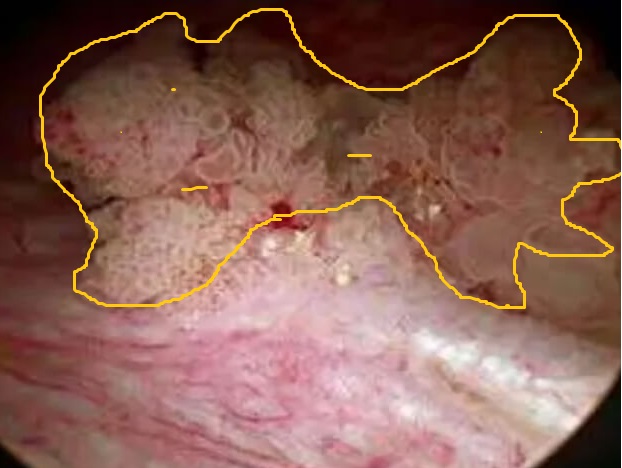Bladder cancer: A mini review
DOI:
https://doi.org/10.5281/zenodo.7265789Keywords:
Bladder cancer, smoking, urologyAbstract
Bladder cancer is the fourth most common cancer in the West, after prostate, breast, lung, and colorectal cancer. Between the ages of 60 and 70, it reaches its highest occurrence. Bladder cancer is 2.5 times as common in men than in women. According to the Global Cancer Incidence, Mortality and Prevalence (GLOBOCAN) data, an additional 573,000 cases of bladder cancer were detected in 2020. This accounts for about 3% of new cancer diagnoses. Tobacco is the leading known cause of bladder cancer, accounting for 30-40% of all cases of urothelial carcinoma and up to two-thirds of all bladder cancers. The increase in the incidence of urothelial and squamous bladder cancer has been associated with mutations in the tumor suppressor gene phosphatase and tensin homolog (PTEN) and DNA mismatch repair gene MutS homolog 2 (MSH2) seen in Cowden and Lynch syndromes. In this review, our goal was to review the epidemiology, etiology, and main risk factors of bladder cancer.
References
Dobruch J, Oszczudłowski M. Bladder Cancer: Current Challenges and Future Directions. Medicina (Kaunas). 2021;57(8):749.
Martinez Rodriguez RH, Buisan Rueda O, Ibarz L. Bladder cancer: Present and future. Med Clin (Barc). 2017;149(10):449-55.
Lenis AT, Lec PM, Chamie K, Mshs MD. Bladder Cancer: A Review. JAMA. 2020;324(19):1980-91.
Kirkali Z, Chan T, Manoharan M, Algaba F, Busch C, Cheng L, et al. Bladder cancer: epidemiology, staging and grading, and diagnosis. Urology. 2005;66(6):4-34.
Sung H, Ferlay J, Siegel RL, Laversanne M, Soerjomataram I, Jemal A, et al. Global Cancer Statistics 2020: GLOBOCAN Estimates of Incidence and Mortality Worldwide for 36 Cancers in 185 Countries. CA A Cancer J Clin 2021;71(3):209–49.
Wang G, McKenney JK. Urinary Bladder Pathology: World Health Organization Classification and American Joint Committee on Cancer Staging Update. Arch Pathol Lab Med. 2019;143(5):571-7.
Aveyard P, Adab P, Cheng KK, Wallace DMA, Hey K, Murphy MFG. Does smoking status influence the prognosis of bladder cancer? A systematic review. BJU Int. 2002;90(3):228-39.
Silverman DT, Hartge P, Morrison AS, Devesa SS. Epidemiology of bladder cancer. Hematol Oncol Clin North Am. 1992;6(1):1-30.
Zeegers MP, Tan FE, Dorant E, van Den Brandt PA. The impact of characteristics of cigarette smoking on urinary tract cancer risk: a meta-analysis of epidemiologic studies. Cancer. 2000;89(3):630-9.
Babjuk M, Burger M, Zigeuner R, Shariat SF, van Rhijn BWG, Compérat E, et al. EAU guidelines on non-muscle-invasive urothelial carcinoma of the bladder: update 2013. Eur Urol. 2013;64(4):639-53.
Bellmunt J, Orsola A, Leow JJ, Wiegel T, De Santis M, Horwich A, et al. Bladder cancer: ESMO Practice Guidelines for diagnosis, treatment and follow-up. Ann Oncol. 2014;25(Suppl 3):40-8.
Grignon DJ. The current classification of urothelial neoplasms. Mod Pathol. 2009;22(Suppl 2):S60-9.
Sanli O, Dobruch J, Knowles MA, Burger M, Alemozaffar M, Nielsen ME, et al. Bladder cancer. Nat Rev Dis Primers. 2017;3(1):1-19.
Islami F, Stoklosa M, Drope J, Jemal A. Global and Regional Patterns of Tobacco Smoking and Tobacco Control Policies. Eur Urol Focus. 2015;1(1):3-16.
Vermeulen SH, Hanum N, Grotenhuis AJ, Castaño-Vinyals G, van der Heijden AG, Aben KK, et al. Recurrent urinary tract infection and risk of bladder cancer in the Nijmegen bladder cancer study. Br J Cancer. 2015;112(3):594-600.
Koshiaris C, Aveyard P, Oke J, Ryan R, Szatkowski L, Stevens R, et al. Smoking cessation and survival in lung, upper aero-digestive tract and bladder cancer: cohort study. Br J Cancer. 2017;117(8):1224-32.
Hemelt M, Yamamoto H, Cheng KK, Zeegers MPA. The effect of smoking on the male excess of bladder cancer: a meta-analysis and geographical analyses. Int J Cancer. 2009;124(2):412-9.
Chappidi MR, Kates M, Tosoian JJ, Johnson MH, Hahn NM, Bivalacqua TJ, et al. Evaluation of gender-based disparities in time from initial haematuria presentation to upper tract urothelial carcinoma diagnosis: analysis of a nationwide insurance claims database. BJU Int. 2017;120(3):377-86.
Daugherty SE, Lacey JV, Pfeiffer RM, Park Y, Hoover RN, Silverman DT. Reproductive factors and menopausal hormone therapy and bladder cancer risk in the NIH-AARP Diet and Health Study. Int J Cancer. 2013;133(2):462-72.
Antoni S, Ferlay J, Soerjomataram I, Znaor A, Jemal A, Bray F. Bladder Cancer Incidence and Mortality: A Global Overview and Recent Trends. Eur Urol. 2017;71(1):96-108.
Gu J, Wu X. Genetic susceptibility to bladder cancer risk and outcome. Per Med. 2011;8(3):365-74.
van der Post RS, Kiemeney LA, Ligtenberg MJ, Witjes JA, Hulsbergen-van de Kaa CA, Bodmer D, et al. Risk of urothelial bladder cancer in Lynch syndrome is increased, in particular among MSH2 mutation carriers. JMd Genet. 2010;47(7):464-70.
Dicleli M, Alabalık U, Bıçak T, Yıldız G, Sertakan H, Nacir M. Plasmacytoma: A Rare Case of Bone Malignancy. J Clin Tri Exp Invest. 2022;1(1):17-21.
Siegel RL, Miller KD, Jemal A. Cancer statistics, 2020. CA Cancer J Clin. 2020;70(1):7-30.

Downloads
Published
How to Cite
Issue
Section
License
Copyright (c) 2022 Unico's Review

This work is licensed under a Creative Commons Attribution 4.0 International License.










